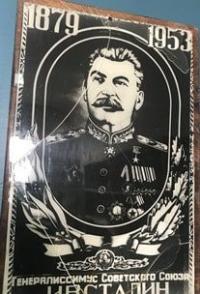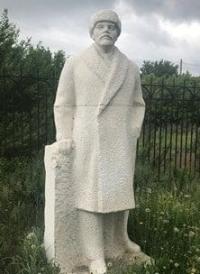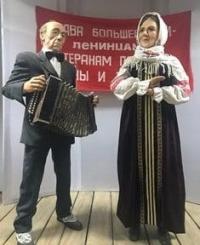You are here
Museum KARLAG in Dolinka.



Excursions on museums of Karaganda area.
“I've known rivers:
I've known rivers ancient as the world and older than the flow of human blood in human veins. My soul has grown deep like the rivers”
Langston Hughes.
Walking tour in Kazakhstan.
The opening in 2001 of a museum in memory of victims of political repression in the center of Karlag, the village of Dolinka, was a significant event nationwide. The uniqueness of this memorial complex is that the museum is located in the historical building of the Karlag Office, built by the forces of thousands of prisoners in 1933 - 1935.
The museum’s exposition, located on its three floors, includes sections: “Hunger in Kazakhstan”, “History of the formation of Karlag”, “The economic activity of Karlag”, “Women and children”, “Deportation of peoples”, “Names and fates”.
The eastern and western peoples have a myth about the fabulous bird Samruk. It the red bird, dying, is reborn from the ashes again, symbolizing life, strength, hope and invincibility. The opposite of life - death is associated in a person’s mind with a white color, meaning oblivion and the extinction of life.
The third color with which everything evil and dark is painted in our consciousness is black. It is also present as a reflection of the evil that oppresses life. On the confrontation of red and white, life and death, humanism and total tariffism, built a design solution to the exposition.
In the basement of the museum - there is a punishment cell, male and female cells, an investigator’s office, an inquiry office - visitors can plunge into the atmosphere of repression, feel the condition that arises in the walls, where there was despair, hopelessness, unbearable physical and mental pain, powerlessness.
The emotional impact is enhanced by sound effects, selected so that they can convey to the consciousness the tragedy of what was happening. The cultural and educational activities of the museum are distinguished by a variety of forms and are constantly enriched.
In 2012, the museum in memory of victims of political repressions was the first among the museums of the Karaganda region, which joined the international campaign "Night at the Museum", with the aim, in particular, to win the attention of a new audience, especially the younger generation.
Authority:
Marina Klyshnikova, Svetlana Bainova. Museum Magazine No. 03.2015
The Karaganda of today is a typical steppe mining town, but it hides a tragic past: this was the place where, from 1929 until well into the 1950s, forced migrants and prison camp inmates were tasked with making one of the most forbidding environments of the vast Soviet empire fit to live in.
Nowhere else in Kazakhstan was there such a concentration of prison camps as in the central steppe. The region's wealth in mineral resources was particularly effectively exploited with the help of prison labour.
Karlag was one of the thousand prison camps called GULAG (or Main Department of Prison Camps).
Organized during the time of mass political repressions in the Soviet Union in 1930's. The Administrative center of Karlag was located in the Dolinka Village (50 km. to the south-west of today’s Karaganda town).
From 1929, the bulk of the work was done by prisoners; first came the disposesed farmers, batches of political prisoners, the labour armies of deported Germans, and finally the German and Japanese prisoners of wa: More than 800,000 inmates were put to work in a huge area called Karlag (Karagandinsky lager).
Part of the remains of this gruesome piece of history can still be seen today. The villages of Uzinka (after the Russian word uznik, meaning chained prisoner) and DolinL to the southwest of Karaganda, were originally built as prisons and inhabited by convicts.
Authority:
The guidebook across Kazakhstan . Authors Dagmar Schreiber and Jeremy Tredinnick. Publishing house "Odyssey".2010.
Photos
Alexander Petrov.







